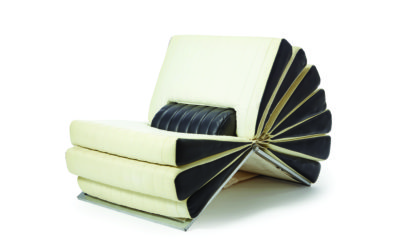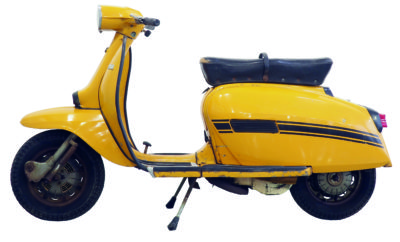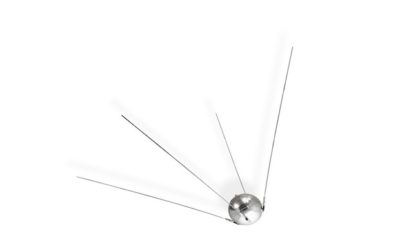Use your ← → (arrow) keys to browse
Upward and onward
The Spacelander bicycle premiered at the 1946 Britain Can Make It exhibition, a patriotic display of the country’s industrial potential after World War II. The bicycle’s curves and sleek finish echoed American streamlining of the 1930s but with a postwar influence of organic irregularity. While its designer, Benjamin Bowden (1906–1998), had intended the bike to be a push toward more user-oriented design, it became instead a glorification of postwar manufacturing capabilities. Constructed from chrome-plated steel, aluminum, leather, and rubber, it employed materials developed for wartime use that their manufacturers sought to convert to civilian purposes. Coupled with its innovative structure, these materials embodied the capabilities of technology and the dream of the future. But the future was apparently too distant for British manufacturers, who refused to produce Bowden’s design despite promising demand and orders placed for the bicycle after the exhibition. It did not pedal into production until 1960, at Bombard Industries in Grand Haven, Michigan. But by then it was cumbersome; now molded from fiberglass, it weighed fifty pounds and its curving shape was outdated. All the bells and whistles contributed to a hefty price tag of almost $90, and it did not attract consumers. Only 522 were produced.
Use your ← → (arrow) keys to browse
 Lot 259 Wright “Modern Design” sale, Chicago, March 28, 2013: Spacelander bicycle designed by Benjamin Bowden in 1946 and manufactured by Bombard Industries in 1960. Estimated at $5,000 to $7,000, the bike sold for $35,000.
Lot 259 Wright “Modern Design” sale, Chicago, March 28, 2013: Spacelander bicycle designed by Benjamin Bowden in 1946 and manufactured by Bombard Industries in 1960. Estimated at $5,000 to $7,000, the bike sold for $35,000.












